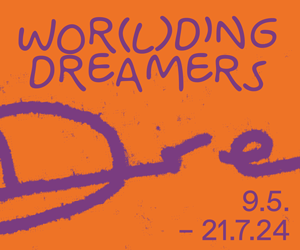by Alison Hugill // May 3, 2024
This article is part of our feature topic Habitat.
In her essay ‘Breathing: A Revolutionary Act,’ Françoise Vergès begins with an alarming scenario: “There is no alternative to unbreathing. If I cannot breathe, I die. The lungs of humans and animals, as well as the ‘lungs’ of forests, plants and oceans, have long been under assault. Now, across the globe, breathing has become a privilege of race and class.” The health of our habitat, in all its socio-political dimensions, is crucial to our communal survival. Vergès points to imperialism as a major generator of “un-breathing” on our planet—the under-acknowledged by-products of armies, the “countries and bodies wasted by war, invasion and colonization.”
To counter these destructive impulses, she suggests a variety of “de-poisoning practices”—from the centering of indigenous struggles for preservation to boycotting weapons manufacturers, fast fashion and agribusiness—that re-assert our fundamental right to breathe. Against this dire backdrop, our new topic, Habitat, foregrounds artists and artworks—across performance, dance, architecture and activism—that re-focus our attention on the contemporary climate crisis as part of a larger structural problem.

Protesters marching against a PCB landfill in Afton, Warren County, North Carolina, led by Reverend Leon White (second from left), Reverend Joseph Lowery (center), and Ken Ferruccio (second from right), 1982 // Getty Images, Bettmann Archive, Photo by Otto Ludwig Bettmann
Choreographer and dance artist Hannah Schillinger’s recent piece ‘screen play’ at Dock 11 (2023 and 2024) encroaches on themes of ecology, climate crisis and the creation of self-contained ecosystems. Using dance and video, she moves between sci-fi, climate activism and a queer understanding of landscape. Contributor Beatrix Joyce spoke with Schillinger about her research for ‘screen play,’ for which she visited 12 “wounded landscapes” across Germany and the Czech Republic. As a dancer, she took a somatic approach to exploring and listening to these places, many of which are deemed dangerous or labelled as “no-trespassing” zones. She later translated this experience into the piece, exploring the ways in which regeneration is necessary and possible.
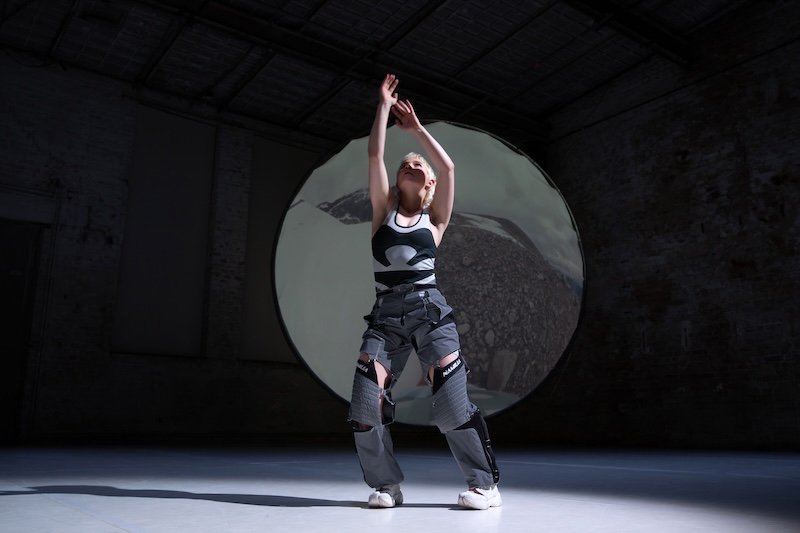
Hannah Schillinger: ‘Screenplay,’ 2023 // Photo by Alicja Hoppel
In a conversation with Carson Chan—director of the Ambasz Institute for the Joint Study of the Built and Natural Environment, and curator of MoMA’s Department of Architecture and Design—we discuss the exhibition ‘Emerging Ecologies: Architecture and the Rise of Environmentalism,’ recently on view at MoMA in New York and dedicated to both realized and unrealized projects that address ecological and environmental concerns by architects who practiced in the United States from the 1930s through the 1990s. Presenting visions for the future from a moment already past, the projects in the show shed light on the interconnected relationships between various organisms and their physical environment and the history of how humans live, shelter themselves and modify their surroundings.
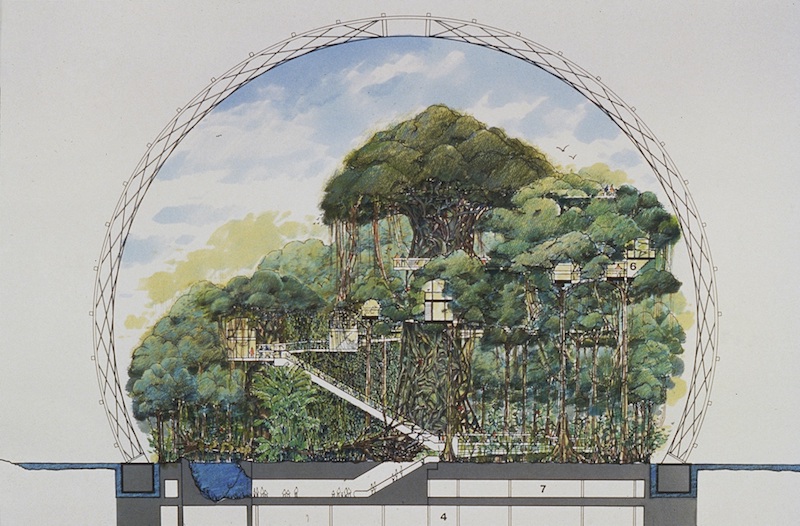
Cambridge Seven Associates (American, est. 1962). Tsuruhama Rain Forest Pavilion, Osaka, Japan. Project, 1993–95, section drawing showing the underground levels and the paths at the forest level. 1994–95. Marker and Prismacolor pencil on black-line diazo print, 50.8 × 76.2 cm // Collection Cambridge Seven Associates
Chilean collective Agencia de Borde (Rosario Montero, Paula Salas and Sebastián Melo) work at the crossover of art and anthropology, researching the representation of the natural environment from both a political and sensory perspective. Speaking about their recent exhibition project ‘Bosques de Fuego’ (2022) with contributor Juan José Santos Mateo, they ask: “What other ways can we imagine relating to nature as an equal? Can we perceive and relate to the different forms of natural intelligence and technologies?”
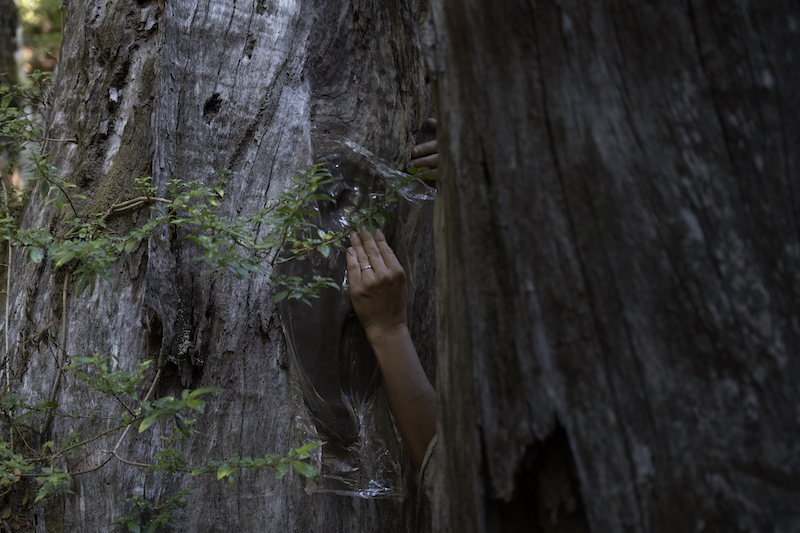
Agencia de Borde // Courtesy of the artists
In her largest work to date, co-commissioned by Hamburger Bahnhof and Audemars Piguet Contemporary, Alexandra Pirici’s live action performance and site-specific installation, ‘Attune,’ draws attention to the self-organizing impulses of organic and inorganic matter, urging us to tune into the multiple perspectives around us. A polyphonic chorus punctuates the work, metaphorically and materially drawing us into a meditation on our ability (or lack thereof) to hear several voices simultaneously. In a review of the work, Marley Heltai thinks through what it can tell us about the urgent need to re-invent our relationship to our natural surroundings.
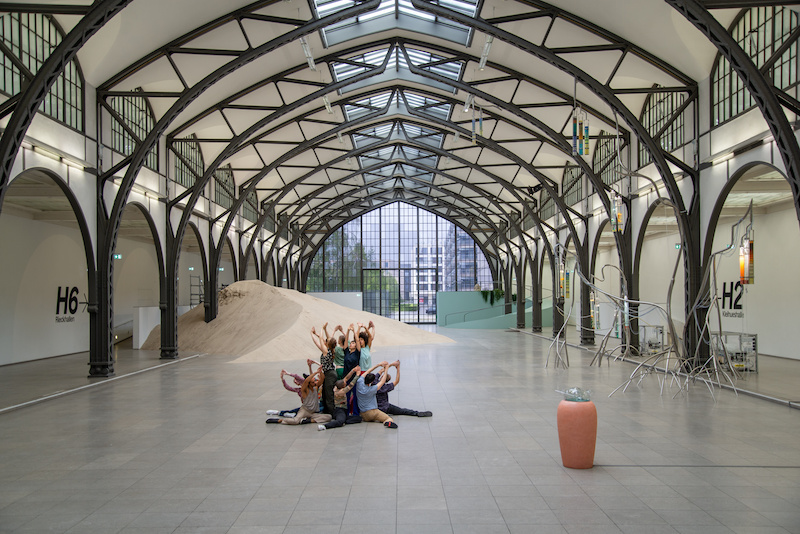
Alexandra Pirici: ‘Attune,’ 2024 // Courtesy of the artist and Audemars Piguet
By examining the ways in which humans both shape and are shaped by their environments, this topic will consider the theme, firstly, from the point of view of its most basic definition: habitats as resources that support the survival and reproduction of a species. Departing from a consideration of our fundamental right to breathe, now deemed a revolutionary demand, the featured articles will also look at how and why the most vulnerable and marginalized communities are forced to endure the worst effects of climate crises.



